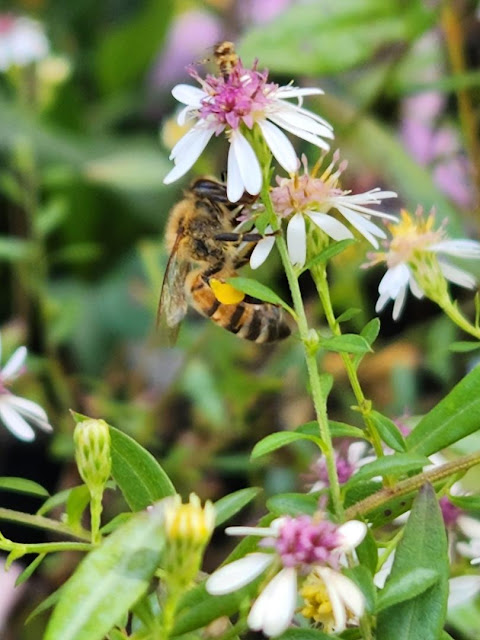There's A Risk To Being An Aster
It's late fall right now, heading quickly to Thanksgiving, and my asters are still blooming. Many of the nearly 12 species that I now have in my landscape have finished and turned to ripened seed, but a few have just started. The calico asters (Symphyotrichum laterifolium) are winding down are the Georgia asters (Symphyotrichum georgianum), but my rice button aster (Symphyotrichum dumosum) is still covered in open flowers, my Carolina asters (Symphyotrichum carolinianum) are just starting, and my scaleleaf aster (Symphyotrichum adnatum) has yet to bloom, though it is now covered in buds. Asters are the ultimate risk takers among the flowering plant world and each year they play that out. There are great benefits to blooming so late, but great risks as well.
By blooming this late, asters ensure that they are the only game in town. There are very few flowering plants native to this latitude in bloom at this time. The others have done their thing and moved on to seed production. Pollinators, like the honeybee nectaring on the calico aster above, have little choice to use the blooms of the late asters in my landscape. Late bloomers avoid the competition for pollinators that most other flowering plants have to contend with, but there is a risk; there are far fewer pollinators still active and an early freeze would make pollination impossible for the year.
Most native pollinators shut down this late in the season. I see very little diversity of native bees and other pollinating insects right now in my landscape. Most butterflies are now resting for the winter. The species with some linkages to more tropical latitudes - gulf fritillaries and cloudless sulfurs, for example, are still around, but even these seem to be in reduced numbers. Late bloomers, like many of the asters in my landscape, risk getting pollinated at all. They may be the only game left in town, but it may be a game that no one else is playing.
I anxiously wait each early winter to see if I will get viable seed from some of these species. Carolina aster is always a sure bet, but it ensures pollination by producing an almost-overwhelming scent designed to bring everything by that's within a whiff of its fragrance. My other asters are not that bold. I have not gotten germination in past years from my scaleleaf aster though it produces large numbers of fluffy seeds. Perhaps I need to cold-stratify its seeds - something I have not done before, but perhaps these seeds are not viable. Time will tell.
Risk takers sometimes come out on top, but they also sometimes crash and burn. The beauty of these late-season flowers is that they extend the feeding season for my pollinators. The risk involves whether any of them are still sticking around this late.





Thank you for this. I had recently bemoaned to a British friend that I believed that asters aren't really suited to Florida. I have lovely memories of my childhood family garden filled with butterflies attracted to the Michaelmas daisies my mum liked to grow.
ReplyDeleteI should try harder.